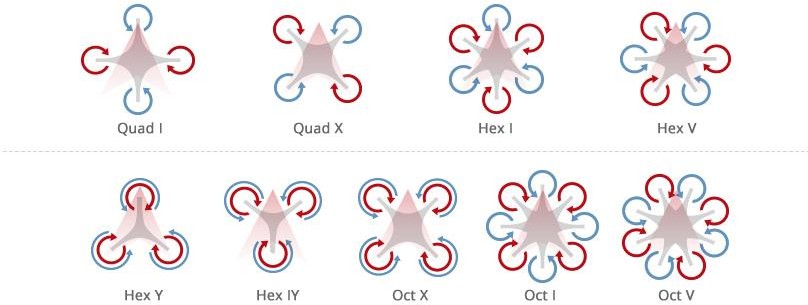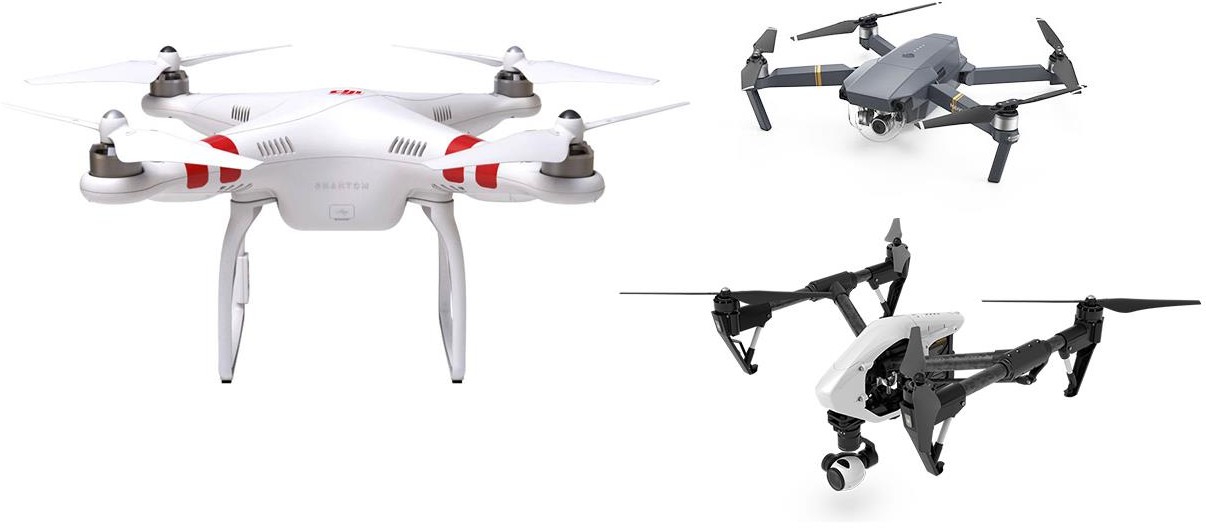Добавлен: 08.11.2023
Просмотров: 1445
Скачиваний: 6
СОДЕРЖАНИЕ
Проблема охраны территорий от малогабаритных БПЛА
Обзор известных методов решения проблемы
Постановка задачи проектирования системы управления охранного квадрокоптера
Характеристики центрального процессора (CPU)
Барометрический датчик давления
Электронный регулятор скорости (ESC)
Принцип работы датчика с оптическим потоком
Результат сборки квадрокоптера
Программная среда Robot Operating System
Алгоритм управления автономным полетом охранного квадрокоптера
Финансовый менеджмент, ресурсоэффективность и ресурсосбережение
Продолжительность этапов работ
Расчет сметы затрат на выполнение проекта
Расчет затрат на электроэнергию
Расчет затрат на социальный налог
Расчет прочих (накладных) расходов
Безопасность в чрезвычайных ситуациях
Особенности законодательного регулирования проектных решений
Список используемых источников
Приложение А
Area and object of research
Студент
| Группа | ФИО | Подпись | Дата |
| 8ЕМ61 | Мироненко Данил Николаевич | | |
Руководитель ВКР
| Должность | ФИО | Ученая степень, звание | Подпись | Дата |
| Профессор | Сырямкин В.И. | д.т.н. | | |
Консультант-лингвист отделения иностранных языков ШБИП
| Должность | ФИО | Ученая степень, звание | Подпись | Дата |
| Ст. преподаватель | Горбатова Т.Н. | | | |
-
Field of study
An Unmanned Aerial Vehicle (UAV) is known as a powered flying vehicle that does not carry a human operator, that can be operated remotely or autonomously and that can carry a payload. [1] The UAVs can be used in both military and civilian applications. UAVs can carry out tasks without placing human pilots in jeopardy.
In addition, UAVs can operate in hazardous conditions and long piloted operations.
Different types of Unmanned Aerial Vehicles (UAVs) have become available in recent years, namely, fixed-wing UAVs and rotary-wing UAVs. Compared with fixed-wing UAVs, the rotary-wing UAVs have advantages such as Vertical Taking-Off and Landing (VTOL) ability. The rotary-wing UAVs cover helicopters and multirotors. A multirotor is a rotorcraft with more than two rotors. Compared to helicopters, a multirotor has the simplicity of rotor mechanics required for flight control. Unlike conventional helicopters, which are mechanically very complex, the multirotor usually uses fixed-pitch blades. The
control of vehicle motion is achieved by varying the relative speed of each rotor in order to change the thrust and torques. Varieties of multi-copters are shown in Figure 1.1.
The most famous multirotor is the quadrotor, which has four rotors. In addition to the ability of VTOL, quadrotors also have advantages such as maneuverability, low-cost, small size, and easy handling. These advantages motivate researchers to pay attentions to quadrotors. Other advantages of quadrotors are reliability and compactness, which are essential for a system that will be portable and useful in close proximity to people and structures for commercial applications.

Figure 1.1 – Types of multicopter designs
In the last decade, the research on quadrotors has substantially increased.
Figure 1.2 shows examples of quadrocopters of various applications.

Figure 1.2 – Varieties quadrocopter
UAVs (Unmanned Aerial Vehicles) were used commercially for the first time in Japan at the beginning of the 1980s, when unmanned helicopters proved to be an efficient way of supplementing piloted helicopters to spray pesticides on rice fields. At that time, remote aircraft technology was expensive and cumbersome. Progress has surged forward in technological capabilities, regulations and investment support, providing many new possible applications, particularly in agriculture, infrastructure, security, transport, media & entertainment, telecommunications, mining and insurance.
It is difficult to imagine a field of industry or life in which drones do not find any use. For example, in agriculture, UAVs help to optimize decisions on harvesting crops or using herbicides. In forestry, drones are able to control the forest condition or to detect a fire hazard. They can also be used to search for survivors at sea, to inspect power lines, to observe borders, or to provide information on hurricane damage.
- 1 ... 27 28 29 30 31 32 33 34 35
The problem of protecting territories from small-size UAVs
Drones are commonly used for military purposes, basically, to recognize the battlefield. They are also used to transport equipment to the front line. According to the Mikromakro Institute report, the United States and Israel dominate in the unmanned military technology sector. China is definitely ahead in drone segment used for entertainment, The European Union focuses on civil and governmental use. [2]
Rapid technological developments have made drones far more accessible and widely used recreationally and commercially. As a result, drones pose a serious threat to personal privacy.
Serious invasions of privacy range from inadvertent surveillance and collection of personal information through photographs to criminal conduct such as stalking.
These unmanned aircraft vehicles also pose a threat to institutions that, despite having high fences, monitoring and other security systems, are not able to protect themselves against the intrusion of drones into their territory. The similar situation concerns private companies, which do not have any protection against illegal infringement of their security by air. This creates the risk due to the use of drones for industrial espionage, hacking attacks on IT infrastructure, theft of sensitive data or valuable goods.
The dynamic growth of the drone market and their increasing availability to a wide range of consumers carry risks and pose a major security challenge. Drones
are used not only for illegal activities but also for terrorist attacks. They are used to deliver contraband to prisons and across state borders.
In 2016, 1200 drone incidents have been noticed by the European Union. They were deemed to be a threat to civil aviation safety. At the same time, The UK government has even commissioned a series of test crashes between drones and planes, to find out exactly how much damage a quadcopter could cause in a real-life collision. The results may be critical for safety concern.
The European Commission is working on common EU rules governing drones – from toys to long distances large aircraft. The problem is that the current EU regulations concern aircraft weighing more than 150 kilograms, however more and more concerns are created by consumer drones. [3]
-
A review of known methods for solving the problem
Currently, there are many ways to combat the illegal invasion of UAVs in the protected area. One of such solutions is the “United Instrument-Making Corporation” (UIMC is a member of the state corporation “Rostekh”). The company makes a system for monitoring and protecting the territory of important civil and military facilities. The system consists of three helicopter-type drones, a fiber-optic cable and a control room with computer equipment for information processing. The approximate price of this kit is from 10 million rubles. The complex provides protection of the territory with a perimeter length of about 100 km. In this system, surface vibrations are read by a fiber-optic cable, allowing to identify an object that has penetrated the protected space.
The company “Amba Defense”, located in the UK, is engaged in the production of drones, which provide protection of objects and territories in many countries. The American company “Optellios” produces security systems with fiber-optic sensors, thanks to which it is also possible to detect unauthorized access to the facility.
The Japanese company “Secom” offers customers its product - property protection with the use of “air forces”. An autonomous robot-drone will rise in the air in case of triggering a regular alarm system, which the company establishes. The only “weapon” of the air guard is a small video camera, the data from which immediately arrive at the security panel. Thus, “Secom” employees can quickly assess the situation on the site of unauthorized access.

Figure 1.3 - The robot-drone of “Secom”
The software allows the robot to identify a suspicious subject and keep a close eye on him, trying to capture his face on the camera. In case of detection of a suspicious vehicle, an autonomous robot-drone will try to fix his registration mark. [4]
The sentry drone of “Aptonomy”, which is a promising American start-up, can be used to protect a private area or industrial premises from intrusion.
Today, the protection of important facilities is entrusted to guards, who regularly bypass entrusted territories, guard dogs and special surveillance systems. In “Aptonomy” it was considered that the guard drones would provide more reliable protection, the costs of which would be substantially lower.
The sentry drone is made by the type of an octopopter, has flashing beacons of blue and red colors (as special police signals), two loudspeakers and a bright LED spotlight.
In addition, the device is equipped with a video camera, a night
vision camera and a thermal imager. The diameter of the drone is just over a meter. The watchdog "Aptonomy" is shown in Figure 1.4.

Figure 1.4 - Sentry drone of Aptonomy
The Drone is equipped with an automatic recharging system. If during the patrol the charge of its battery drops to several percent, the unit will return to the base and connect to the charger on its own. With the help of a special control panel, the operator can map out the patrolling plan for the territory and transfer it to the watchdog units. After that they will be guarding off-line.
Upon detection of the offender, the drone will hang at some distance from it and first warn flashes of flashing beacons. At the same time, the unit will turn on the video recording. If the intruder does not react, the drone will start playing pre- recorded warning phrases through the loudspeakers, turn on the searchlight and direct the beam to the target.
According to “Aptonomy”, these actions will be enough to drive away most of the violators. However, for greater security, the operator will receive a signal of penetration into the territory. In addition, the operator will be able to directly communicate with the intruder through the loudspeaker apparatus. [5]
The Russian group of companies “ZALA AERO” also develops unmanned aerial vehicles aimed at protecting and protecting objects. The representative of the company's products is ZALA 421-22F UAV, shown in Figure 1.5.

Figure 1.5 - Security drone ZALA 421-22F
ZALA 421-22F is an unmanned mid-range helicopter with automatic control system (autopilot), navigation system (GPS / GLONASS), integrated digital telemetry system, navigation lights, built-in three-axis magnetometer, hold and active tracking module (AC module), digital broadband a C-OFDM modulation video transmitter, a radio modem with a SNA receiver, a self-diagnosis system and a search transmitter.
The Copter protects people and various objects in specific areas with a radius of no more than 10 km. Due to the possibility of hovering and approaching the object of interest for a distance of 10-15 meters, the copter receives the most accurate data (for example, the identification of people who initiated the brawl during a mass event). Improved “16E+” targets allow the device to receive and transmit in real time high-quality images to the ground security services at any time. [6]
- Statement of the problem of designing a control system for a guard